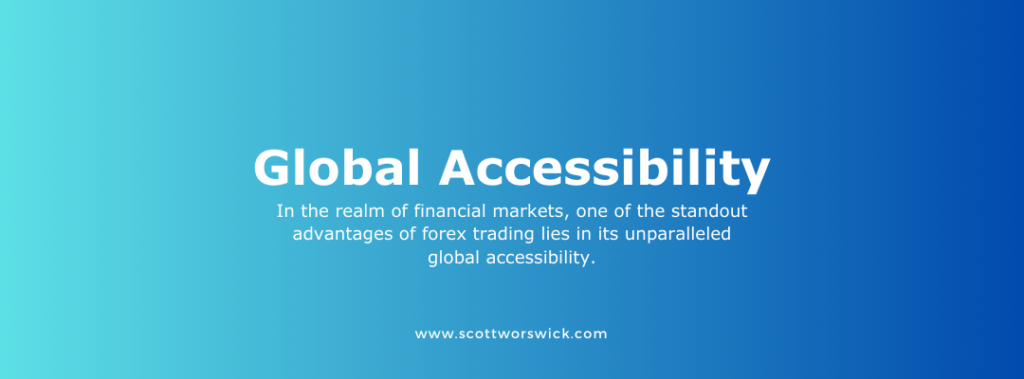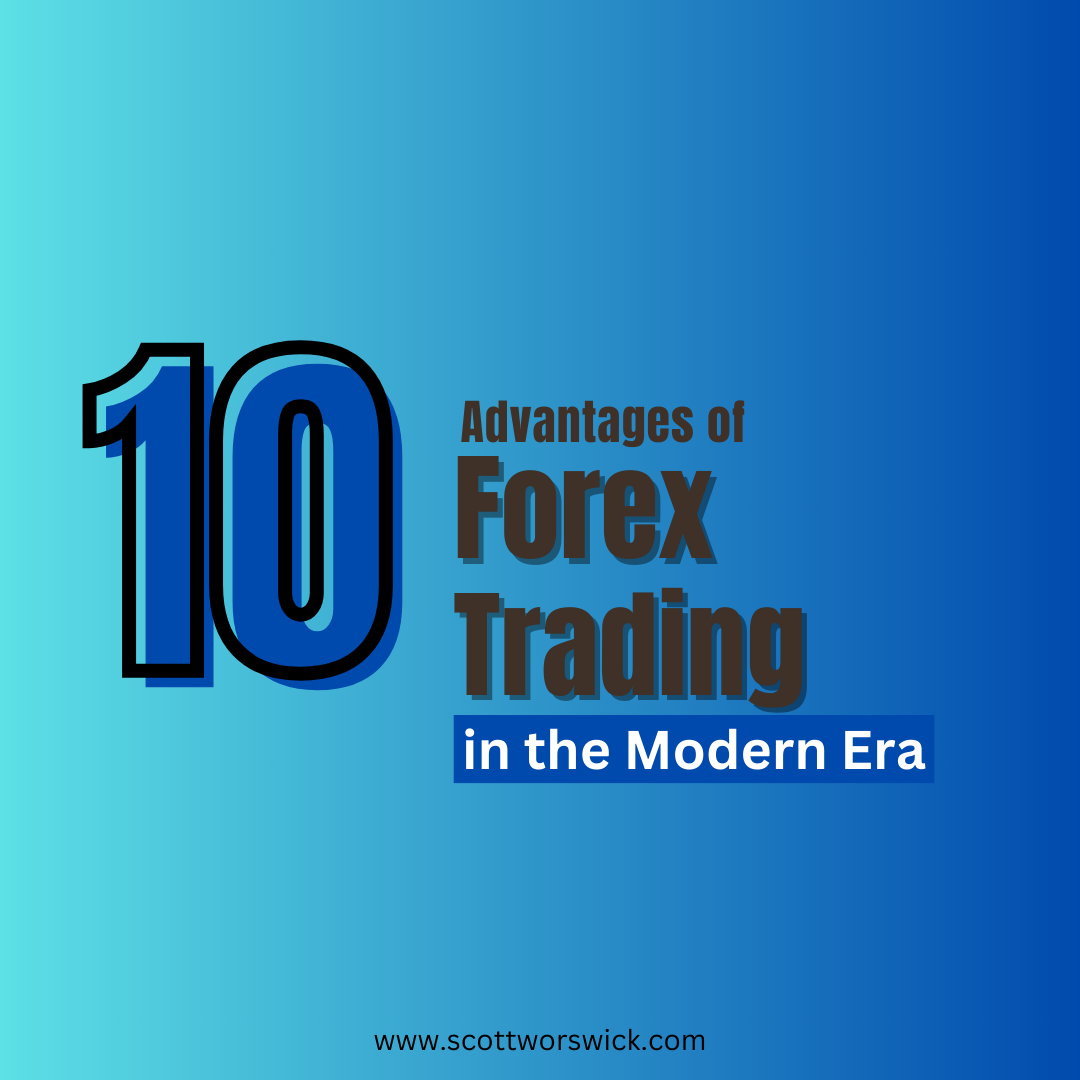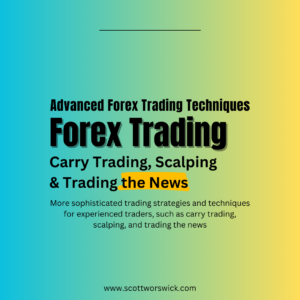In the ever-evolving world of finance, forex trading stands out as a dynamic and lucrative venture, offering a multitude of advantages to traders in the modern era. With its global reach and round-the-clock accessibility, forex trading has revolutionized the way individuals and institutions engage with the financial markets. From seasoned investors to novices looking to dip their toes into trading, the allure of forex lies in its potential for profit and the diverse opportunities it presents.
The modern landscape of forex trading is characterized by unprecedented levels of liquidity, providing traders with the flexibility to enter and exit positions with ease. Unlike traditional stock markets, where liquidity can vary depending on the asset being traded, the forex market boasts trillions of dollars in daily trading volume, ensuring that orders are executed swiftly and efficiently. This high liquidity not only minimizes slippage but also enhances price transparency, enabling traders to make informed decisions based on real-time market conditions.
Moreover, the advent of advanced trading technology has further propelled forex trading into the forefront of financial innovation. From state-of-the-art trading platforms to cutting-edge charting tools, technology has empowered traders to analyze markets, execute trades, and manage risk with unprecedented precision. With the click of a button, traders can access a wealth of market data, leverage automated trading strategies, and execute complex orders with ease. As technology continues to evolve, the potential for growth and profitability in forex trading remains limitless, making it an indispensable tool in the modern trader’s arsenal.
Table of Contents
1. Global Accessibility

In the realm of financial markets, one of the standout advantages of forex trading lies in its unparalleled global accessibility. Unlike traditional stock exchanges that operate within specific time zones and trading hours, forex trading transcends geographical boundaries, facilitating round-the-clock trading activities across different continents. This accessibility empowers traders to seize opportunities at any hour of the day, aligning with their schedules and preferences. Whether it’s an early morning trade in Asia, a midday transaction in Europe, or a late-night session in North America, the forex market remains active, providing ample opportunities for traders worldwide to participate in.
Moreover, the decentralized nature of the forex market contributes to its global accessibility, as it operates through a network of interconnected financial institutions, including banks, brokers, and electronic trading platforms. This network ensures continuous liquidity and market participation, regardless of a trader’s location. Whether you’re based in a bustling metropolis or a remote village, as long as you have access to an internet connection and a trading account, you can engage in forex trading with ease. This democratization of access levels the playing field, allowing traders of all backgrounds and experience levels to partake in the vast opportunities that forex trading offers.
Furthermore, the advent of mobile trading apps has further enhanced the global accessibility of forex trading, enabling traders to execute trades on the go, directly from their smartphones or tablets. With the tap of a finger, traders can monitor market developments, analyze charts, and place orders in real time, regardless of their location. This flexibility not only empowers traders to stay connected to the market at all times but also eliminates the need for bulky desktop setups or constant access to traditional trading terminals. Whether you’re commuting to work, traveling abroad, or simply relaxing at home, the global accessibility of forex trading ensures that opportunities are never out of reach.
2. High Liquidity
In the realm of financial markets, the concept of liquidity is paramount, and forex trading stands out for its remarkable levels of liquidity. With trillions of dollars exchanged daily, the forex market boasts unparalleled liquidity, ensuring that traders can enter and exit positions with ease. This high liquidity is a testament to the vast number of participants in the market, including central banks, financial institutions, corporations, and individual traders. As a result, even large trade sizes can be executed swiftly and efficiently in the forex market, minimizing the risk of slippage and enhancing overall trading efficiency.
The high liquidity of the forex market is attributed to its decentralized nature, as it operates across a global network of interconnected financial institutions. Unlike centralized exchanges, where liquidity can be concentrated in specific assets or trading sessions, the forex market remains active 24 hours a day, five days a week, across different time zones. This continuous operation ensures that liquidity is distributed evenly throughout the day, allowing traders to access competitive pricing and tight spreads at any hour. Whether it’s during the Asian, European, or North American trading sessions, liquidity remains abundant, providing ample opportunities for traders to capitalize on.
Furthermore, the high liquidity of the forex market contributes to its price transparency, as prices are determined by supply and demand dynamics in real time. Unlike illiquid markets, where large orders can cause significant price swings, the deep liquidity of the forex market absorbs buy and sell orders seamlessly, resulting in stable price movements. This transparency enables traders to make informed decisions based on accurate market information, without having to worry about artificial price distortions or manipulation. As a result, traders can execute trades with confidence, knowing that they are operating in a fair and efficient market environment.
Moreover, the high liquidity of the forex market fosters competition among market participants, leading to tighter spreads and lower transaction costs. With numerous liquidity providers vying for order flow, brokers are incentivized to offer competitive pricing and minimal commission fees to attract traders. This benefits traders by reducing their trading costs and maximizing their potential profits. Whether you’re a retail trader or a large institutional investor, the high liquidity of the forex market ensures that you can access favorable trading conditions and execute trades with ease, making it a preferred choice for traders in the modern era.
3. Diverse Trading Options in Forex Trading
Within the realm of modern finance, forex trading offers a diverse array of trading options, catering to the preferences and strategies of a wide range of investors. The forex market encompasses a vast selection of currency pairs, ranging from major pairs like EUR/USD and GBP/USD to exotic pairs such as USD/TRY and USD/SGD. This diversity enables traders to tailor their trading portfolios to their specific goals and risk tolerances, allowing for greater flexibility and customization. Whether a trader prefers to focus on the stability of major pairs or the potential volatility of exotic pairs, the forex market provides ample opportunities for exploration and growth.
Moreover, forex trading extends beyond traditional currency pairs, offering innovative products and derivatives that appeal to sophisticated traders. From currency options and futures to contracts for difference (CFDs) and exchange-traded funds (ETFs), the forex market provides a wide range of instruments for traders to speculate on currency movements and hedge against risk. These diverse trading options empower traders to implement a variety of strategies, including hedging, speculation, and arbitrage, depending on their objectives and market outlook. Whether a trader seeks to capitalize on short-term price fluctuations or establish long-term positions, the forex market offers a wealth of opportunities to suit every trading style.
Furthermore, the advent of online trading platforms has further expanded the scope of diverse trading options available in the forex market. With the click of a button, traders can access a multitude of currency pairs, commodities, indices, and other assets, all from a single trading account. This accessibility enables traders to diversify their portfolios beyond traditional currency pairs, incorporating assets from different asset classes and regions. Whether a trader seeks to diversify their risk exposure, capitalize on emerging market trends, or explore alternative investment opportunities, the diverse trading options available in the forex market provide a gateway to global markets and endless possibilities for growth and innovation.
4. Leverage and Margin Trading
In the modern era of financial markets, forex trading offers a unique advantage through the use of leverage and margin trading. Leverage allows traders to control positions that are larger than their initial capital investment, amplifying both potential profits and losses. This ability to magnify trading power enables traders to maximize their exposure to currency movements, potentially increasing their returns on investment. However, it’s crucial for traders to exercise caution and employ effective risk management strategies when utilizing leverage in forex trading, as it can also heighten the level of risk involved.
Margin trading is a fundamental aspect of forex trading, enabling traders to leverage their capital by borrowing funds from their broker. By using margin, traders can access larger positions with a fraction of the capital required, allowing them to trade with increased flexibility and efficiency. This liquidity boost provided by margin trading is especially advantageous in the fast-paced environment of forex markets, where opportunities can arise and dissipate rapidly. However, it’s essential for traders to maintain sufficient margin levels to cover potential losses and avoid margin calls, which could result in forced liquidation of positions.
Moreover, leverage and margin trading empower traders to diversify their trading strategies and capitalize on a wider range of opportunities in the forex market. Whether employing short-term scalping techniques or taking long-term positions based on fundamental analysis, leverage and margin trading provide the flexibility to adapt to varying market conditions and trading styles. Additionally, the ability to leverage capital efficiently can be particularly beneficial for traders with limited resources, allowing them to participate in forex trading on a level playing field with larger institutional investors.
Furthermore, the accessibility of leverage and margin trading has been enhanced in the modern era through the development of advanced trading platforms and technologies. With the evolution of online trading platforms, traders can easily manage their leverage and margin positions in real-time, monitor margin requirements, and adjust their trading strategies accordingly. This seamless integration of leverage and margin trading into modern forex trading platforms empowers traders to optimize their capital efficiency and seize opportunities with precision and confidence.
5. Low Transaction Costs
In the landscape of modern financial markets, forex trading offers a distinct advantage through its low transaction costs. Compared to other forms of trading, such as stocks or commodities, forex trading typically incurs lower transaction costs, including spreads and commissions. The tight spreads in the forex market, the difference between the bid and ask price, ensure that traders can enter and exit positions with minimal slippage, maximizing their potential profits. Additionally, many forex brokers offer commission-free trading or competitive commission rates, further reducing the overall transaction costs for traders.
The low transaction costs associated with forex trading are attributed to the high liquidity of the market and the competitive nature of brokerage services. With trillions of dollars traded daily and numerous liquidity providers vying for order flow, forex brokers are incentivized to offer tight spreads and competitive pricing to attract traders. This abundance of liquidity ensures that traders can access favorable trading conditions and execute trades at optimal prices, without being burdened by excessive transaction costs. As a result, forex trading remains a cost-effective option for investors seeking to capitalize on currency movements.
Furthermore, the advent of online trading platforms has facilitated cost-efficient forex trading, enabling traders to access the market directly from their computers or mobile devices. By eliminating the need for traditional brokerage services and intermediaries, online forex trading platforms have significantly reduced transaction costs for traders. With just a few clicks, traders can execute trades, monitor market developments, and manage their portfolios, all without incurring hefty brokerage fees or commissions. This accessibility and affordability have democratized access to forex trading, allowing traders of all backgrounds and experience levels to participate in the global currency markets.
6. Volatility Opportunities
In the dynamic realm of modern finance, forex trading offers a unique advantage through its exposure to volatility opportunities. Volatility, the measure of price fluctuations in the market, presents traders with numerous opportunities to profit from rapid price movements. The forex market is renowned for its propensity for volatility, driven by a myriad of factors including geopolitical events, economic releases, and central bank decisions. This volatility creates an environment ripe for trading opportunities, allowing traders to capitalize on short-term price fluctuations and potentially generate substantial returns on investment.
Forex trading provides a platform for traders to harness volatility opportunities across a wide range of currency pairs. Major currency pairs, such as EUR/USD and GBP/USD, often exhibit high levels of volatility, particularly during major news events or economic announcements. Conversely, exotic currency pairs, which involve currencies from emerging economies, may experience even greater levels of volatility due to their susceptibility to geopolitical and economic instability. By carefully analyzing market trends and volatility patterns, traders can identify potential entry and exit points, allowing them to capitalize on price movements and maximize their profits in the forex market.
Moreover, the advent of advanced trading technologies has further enhanced the ability of traders to exploit volatility opportunities in forex trading. With the rise of algorithmic trading and automated strategies, traders can execute trades with precision and efficiency, taking advantage of rapid price movements in real-time. These sophisticated trading tools enable traders to react swiftly to market developments, capitalize on volatility spikes, and manage risk effectively. Additionally, the availability of leverage and margin trading allows traders to amplify their exposure to volatile currency pairs, potentially magnifying their profits in times of market turbulence. Overall, volatility opportunities in forex trading remain a key advantage for traders seeking to navigate the fast-paced world of modern finance and capitalize on market fluctuations.
7. Advanced Trading Technology
In the modern era of financial markets, forex trading has been significantly enhanced by advanced trading technology, revolutionizing the way traders engage with the global currency market. The evolution of trading platforms and software has provided traders with powerful tools and resources to analyze markets, execute trades, and manage risk with unprecedented efficiency. From user-friendly interfaces to sophisticated charting software, forex trading platforms offer a seamless trading experience, catering to traders of all levels of experience and expertise. This advanced technology empowers traders to make informed decisions based on real-time market data and analysis, enabling them to capitalize on opportunities in the fast-paced world of forex trading.
One of the key advancements in forex trading technology is the rise of algorithmic trading and automated strategies. Algorithmic trading utilizes complex algorithms to execute trades automatically based on predefined criteria and parameters. These algorithms can analyze vast amounts of market data and execute trades at lightning speed, far surpassing the capabilities of human traders. By leveraging algorithmic trading, forex traders can remove emotion from their trading decisions, minimize human error, and capitalize on market opportunities with precision and efficiency. This automation not only streamlines the trading process but also allows traders to take advantage of market movements 24/7, even when they are away from their screens.
Furthermore, the integration of artificial intelligence (AI) and machine learning technology has further enhanced the capabilities of forex trading platforms. AI-powered trading algorithms can adapt and learn from historical market data, continuously improving their performance and accuracy over time. These intelligent algorithms can identify patterns, trends, and correlations in the market, providing traders with valuable insights and predictive analytics. By harnessing the power of AI, forex traders can make more informed decisions, optimize their trading strategies, and stay ahead of the curve in the ever-changing landscape of the global currency market. Overall, advanced trading technology has transformed forex trading into a sophisticated and dynamic endeavor, offering traders unparalleled opportunities for success in the modern era.
8. Risk Management Tools
In the dynamic landscape of modern finance, effective risk management is paramount for success in forex trading. Fortunately, forex traders have access to a myriad of risk management tools that empower them to protect their capital and navigate the inherent uncertainties of the market. One such tool is the stop-loss order, which allows traders to set predetermined exit points for their trades. By implementing stop-loss orders, traders can limit potential losses and safeguard their investment capital, even in the face of adverse market movements. This proactive approach to risk management ensures that traders can maintain discipline and control over their trading activities, mitigating the impact of unforeseen events on their portfolios.
Additionally, take-profit orders are another essential risk management tool utilized by forex traders to lock in profits and manage their trade positions effectively. Take-profit orders allow traders to set predefined price levels at which their trades will automatically be closed, securing profits before market conditions change. By implementing take-profit orders, traders can capitalize on favorable price movements and maximize their returns on investment, while minimizing the impact of market volatility and uncertainty. This strategic use of take-profit orders enables traders to achieve their trading objectives and optimize their risk-reward ratios in forex trading.
Moreover, forex traders often utilize risk calculators to assess the potential risks and rewards of their trades before entering the market. Risk calculators allow traders to determine the optimal position size for their trades based on their risk tolerance, account balance, and other relevant factors. By accurately calculating position sizes, traders can ensure that each trade aligns with their overall risk management strategy and helps to preserve their capital over the long term. This disciplined approach to position sizing empowers traders to maintain consistency and discipline in their trading activities, ultimately enhancing their chances of success in the competitive world of forex trading.
Furthermore, modern forex trading platforms offer a range of risk management features and tools that enable traders to monitor and manage their risk exposure in real-time. These features may include margin level indicators, account balance alerts, and margin call notifications, among others. By staying informed about their risk exposure and margin requirements, traders can make informed decisions and take proactive measures to protect their capital and prevent margin calls. This proactive approach to risk management not only helps traders to avoid unnecessary losses but also fosters a disciplined and responsible trading mindset, contributing to long-term success and profitability in forex trading.
9. Educational Resources
In the modern era, forex trading offers an abundance of educational resources that empower traders to enhance their knowledge and skills in the financial markets. These resources come in various forms, including webinars, tutorials, e-books, and online courses, catering to traders of all levels of experience and expertise. Whether you’re a novice trader looking to learn the basics of forex trading or an experienced investor seeking to refine your strategies, the educational resources available in the forex market provide valuable insights and guidance to help you succeed.
One of the key advantages of forex trading is the accessibility of educational materials, which enable traders to learn at their own pace and convenience. Online platforms and brokerages offer a wealth of educational content, covering topics such as technical analysis, fundamental analysis, risk management, and trading psychology. These resources provide traders with a comprehensive understanding of the forex market and equip them with the tools and strategies needed to make informed trading decisions. By investing in education and continuous learning, traders can gain a competitive edge in the fast-paced world of forex trading and increase their chances of success over the long term.
Furthermore, forex trading platforms often provide access to expert insights and analysis from seasoned traders and market professionals. These insights may come in the form of market commentary, trading signals, and research reports, offering valuable perspectives on current market trends and opportunities. By staying informed about market developments and expert opinions, traders can make more informed trading decisions and adapt their strategies to changing market conditions. This access to expert analysis enhances traders’ confidence and competence in forex trading, enabling them to navigate the complexities of the market with greater ease and efficiency.
Moreover, the forex trading community itself serves as a valuable educational resource for traders, providing opportunities for networking, collaboration, and knowledge-sharing. Online forums, social media groups, and trading communities offer platforms for traders to connect with like-minded individuals, share experiences, and exchange ideas. By participating in these communities, traders can gain insights from others’ experiences, learn from their successes and failures, and stay updated on the latest developments in the forex market. This sense of camaraderie and community support fosters a collaborative learning environment that empowers traders to grow and succeed in forex trading.
10. Portfolio Diversification
In the modern era of financial markets, forex trading offers a unique opportunity for portfolio diversification, allowing investors to spread their risk across different asset classes and currencies. Diversification is a fundamental principle of investment strategy, as it helps to mitigate risk and optimize returns over the long term. By incorporating forex trading into their investment portfolios, investors can access a global marketplace of currency pairs, commodities, and indices, diversifying their exposure beyond traditional stocks and bonds. This diversification not only reduces the overall risk of the portfolio but also enhances its resilience to market fluctuations and economic uncertainties.
Moreover, forex trading provides investors with exposure to currency movements, which can act as a hedge against inflation and currency risk. In an increasingly interconnected global economy, currency movements can have a significant impact on the value of investments denominated in different currencies. By trading forex, investors can take advantage of fluctuations in exchange rates to protect their portfolios from adverse currency movements and preserve their purchasing power. This currency hedging strategy can help investors navigate volatile currency markets and minimize the impact of exchange rate fluctuations on their investment returns.
Furthermore, the accessibility and liquidity of the forex market make it an attractive option for portfolio diversification. Unlike some other asset classes, such as real estate or private equity, forex trading offers high liquidity and 24-hour market access, allowing investors to enter and exit positions with ease. This liquidity ensures that investors can execute trades at optimal prices, minimizing transaction costs and maximizing efficiency. Additionally, the diversity of trading options in the forex market, including major currency pairs, exotic pairs, and currency derivatives, provides investors with ample opportunities to tailor their portfolios to their investment objectives and risk tolerance levels. Overall, portfolio diversification through forex trading enables investors to build more robust and resilient investment portfolios, better positioned to withstand market uncertainties and capitalize on global opportunities.
Conclusion
In conclusion, the advantages of forex trading in the modern era are abundant and undeniable. From its global accessibility and high liquidity to its diverse trading options and advanced technology, forex trading offers unparalleled opportunities for investors seeking to thrive in the fast-paced world of finance. With the ability to leverage capital efficiently, manage risk effectively, and access a global marketplace of currencies, commodities, and indices, forex trading empowers investors to diversify their portfolios and optimize their returns over the long term.
Furthermore, the volatility opportunities inherent in forex trading provide traders with the potential for substantial profits, while risk management tools and educational resources help to safeguard their capital and enhance their trading skills. By incorporating forex trading into their investment portfolios, investors can benefit from portfolio diversification, currency hedging, and access to global markets, positioning themselves for success in the ever-changing landscape of the financial markets. In essence, forex trading represents a cornerstone of modern finance, offering a gateway to global opportunities and a pathway to financial prosperity for investors around the world.
In summary, the advantages of forex trading in the modern era underscore its significance as a key component of investment strategy and financial innovation. With its ability to adapt to changing market conditions, leverage advanced technology, and facilitate seamless global transactions, forex trading continues to redefine the way investors engage with the global economy. Whether you’re a seasoned trader or a novice investor, the benefits of forex trading are undeniable, offering endless opportunities for growth, diversification, and financial empowerment in the modern era and beyond.





